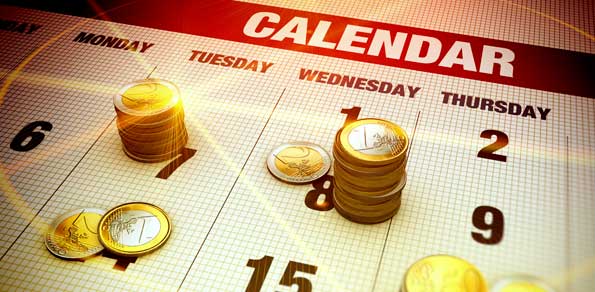Global equity, FX and commodity markets reopened on Sunday evening after the Xmas and New Year holidays. The ongoing economic events that dominated markets in the US and EK and Europe; the Pandemic Relief Bill and Brexit are now over. Therefore, investors and traders will turn their attention back to fundamental and technical analysis combined with the deteriorating COVID-19 global situation, to make trading and investment decisions.
Monday is a hectic day for medium to high impact events listed on the economic calendar. A raft of IHS Markit PMIs will be published, and the focus will be on the leading European economies for signs that a recovery is taking place despite the worsening COVID-19 cases and deaths.
The individual manufacturing PMIs for Spain, Italy, France and Germany are all predicted to report significant improvements, and the overall EU reading is forecast to rise from 53.8 to 55.5 for December. The UK manufacturing PMI will be published, and the expectation is for a reading of 57.3 for December rising from 55.6 in November.
The PMIs across Europe could prove bullish for EUR, GBP, and the various European equity markets that might still experience a post-Brexit trade agreement bounce. Germany’s DAX 30 printed record highs during the last sessions of 2020, as the Eurozone’s engine of growth any further DAX rise could be bullish for EUR pairs.
The UK leading index, the FTSE 100, doesn’t rise in a correlated relationship with its domestic currency, if the FTSE 100 rises then GBP/USD tends to fall due to most quoted firms in the index being US-based companies conducting their transactions in USD.
EUR/GBP closed out 2020 up approximately 6.6% yearly, and it’ll be fascinating to witness if the late December surge GBP experienced versus its peers due to the Brexit trade deal, still has any momentum. Sterling sentiment could rely on how smoothly goods travel between the EU and UK during the first full trading week of the year.
The UK authorities have created massive lorry parks in Kent and tens of thousands of temporary toilets because of the anticipated chaos and lorry gridlock. If the logistics prove to be an over-reaction and movement is frictionless due to the UK lowering its import and export checks, markets will react favourably.
The UK Bank of England will reveal the latest figures for consumer credit and mortgage credit and approvals during Monay’s London trading session, and these figures could prove bullish for GBP. The forecast is for consumer credit for UK citizens to show a fall in November by -£1.5B, with mortgage approvals coming in at 80,000 and £4b value for the same month.
Despite the raging pandemic, 5.5 million workers on furlough-leave, and unemployment predicted to double in the first quarter of 2021, the UK’s engine of growth; selling houses to each other for more and more money (with the linked trickle down to the service industry) showed no sign of a slowdown in 2020. House prices in the UK rose by approximately 7% during the year.
Traders will focus on US economic calendar events during the week
Monday is a quiet day for US economic calendar news; however, forex traders will begin to focus on high impact data to be published later during the week. The US dollar experienced a significant sell-off during 2020 due to the approximate $4.5 trillion stimuli enacted by both the US government and Fed to stem the economic loss due to the pandemic. The minutes relating to the last Fed interest rate-setting meeting will be released this week, and on Friday, the first NFP jobs data gets published.
Will silver and gold continue to be relevant hedges in 2021? Precious metals registered significant gains in 2020, silver closed the year out up approximately 48%, while gold closed 25% up. Silver’s stratospheric rise was due in part to its relative cheapness in comparison to gold. It represented excellent value for investors to buy physical silver between $13 and $26 an ounce during 2020. Gold and silver have a legacy as a proven a hedge against the distrust of the financial system, but analysts remain unconvinced of precious metals’ prospects during 2021.


